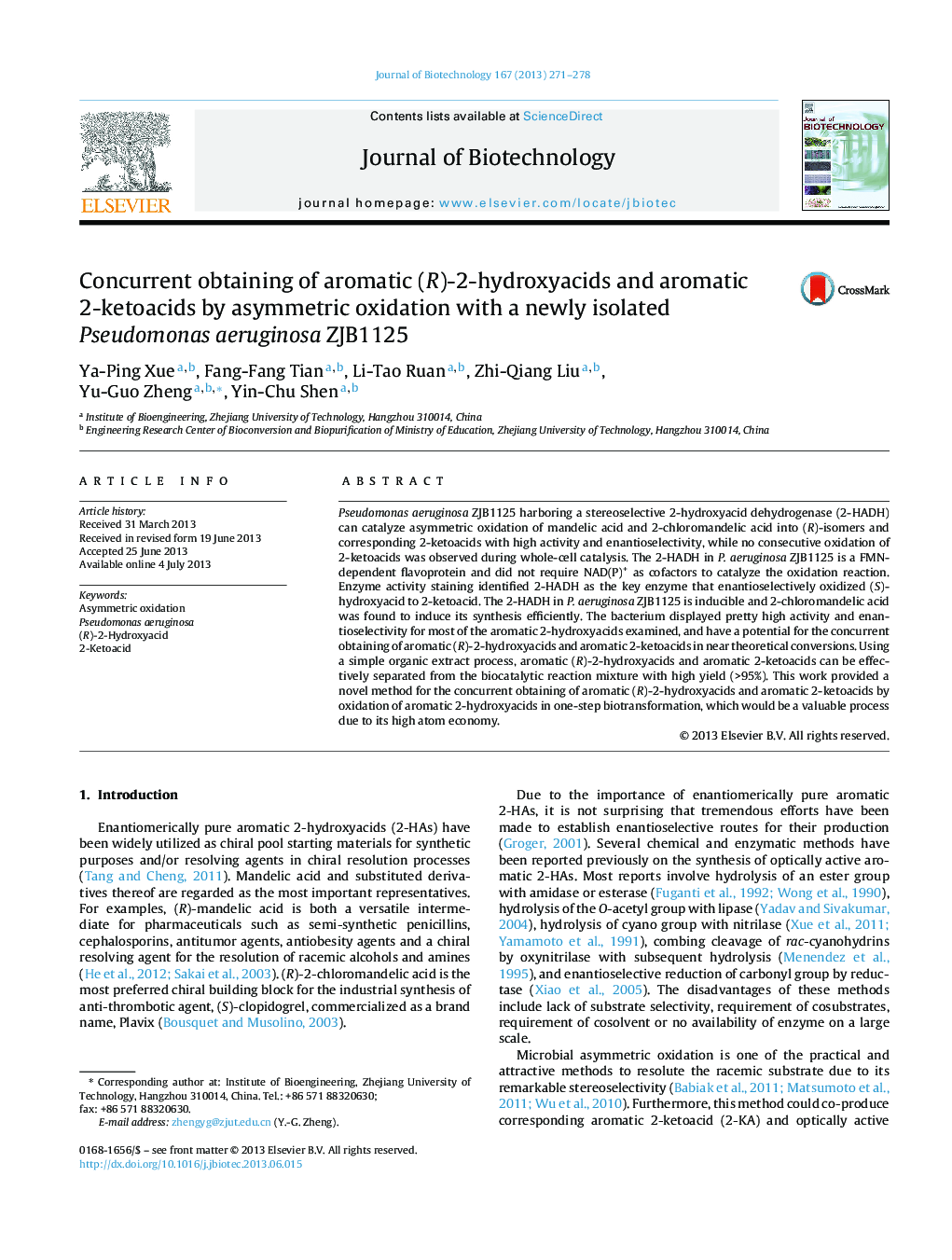| Article ID | Journal | Published Year | Pages | File Type |
|---|---|---|---|---|
| 23506 | Journal of Biotechnology | 2013 | 8 Pages |
•Concurrent obtaining of aromatic (R)-2-HA and aromatic 2-KA was demonstrated.•P. aeruginosa ZJB1125 displayed pretty high enantioselectivity for aromatic 2-HA.•An efficient method was established to separate aromatic (R)-2-HA and aromatic 2-KA.•A novel methodology was provided to utilize racemic aromatic 2-HA efficiently.
Pseudomonas aeruginosa ZJB1125 harboring a stereoselective 2-hydroxyacid dehydrogenase (2-HADH) can catalyze asymmetric oxidation of mandelic acid and 2-chloromandelic acid into (R)-isomers and corresponding 2-ketoacids with high activity and enantioselectivity, while no consecutive oxidation of 2-ketoacids was observed during whole-cell catalysis. The 2-HADH in P. aeruginosa ZJB1125 is a FMN-dependent flavoprotein and did not require NAD(P)+ as cofactors to catalyze the oxidation reaction. Enzyme activity staining identified 2-HADH as the key enzyme that enantioselectively oxidized (S)-hydroxyacid to 2-ketoacid. The 2-HADH in P. aeruginosa ZJB1125 is inducible and 2-chloromandelic acid was found to induce its synthesis efficiently. The bacterium displayed pretty high activity and enantioselectivity for most of the aromatic 2-hydroxyacids examined, and have a potential for the concurrent obtaining of aromatic (R)-2-hydroxyacids and aromatic 2-ketoacids in near theoretical conversions. Using a simple organic extract process, aromatic (R)-2-hydroxyacids and aromatic 2-ketoacids can be effectively separated from the biocatalytic reaction mixture with high yield (>95%). This work provided a novel method for the concurrent obtaining of aromatic (R)-2-hydroxyacids and aromatic 2-ketoacids by oxidation of aromatic 2-hydroxyacids in one-step biotransformation, which would be a valuable process due to its high atom economy.
